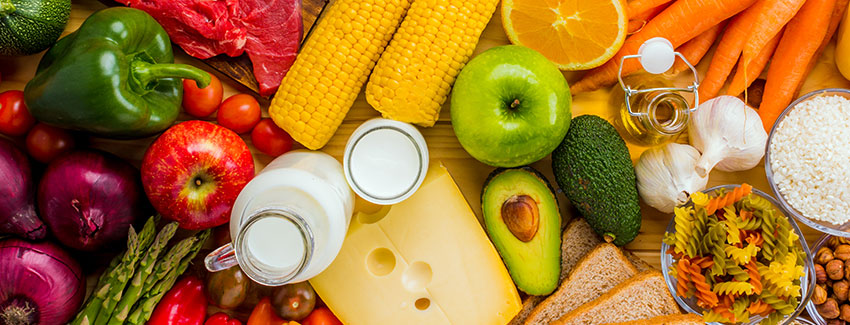
‘Make every bite count’ is theme’
With everything else going on last year and even now, it would’ve been easy to miss the release of the 2020 – 2025 Dietary Guidelines for Americans (DGA), especially since they were published in the waning days of December.
The DGA are updated every five years jointly by the U.S. Departments of Agriculture and Health and Human Services. The guidance is supposed to help Americans understand the link between nutrition and health, and also to provide information about dietary choices. In 2015 the focus was all about defining healthy dietary patterns. The idea being there’s more than one healthy dietary pattern, which by the way was highly appealing because of our mutual desire for individuality.
In 2020 Americans are being urged to make every bite count or as I like to think of it – eat more fruit and veggies. The mindful eating message is an acknowledgement that you are what you eat. The latest DGA are fourfold:
- Follow a healthy dietary pattern* at every life stage. (This is an acknowledgement that our dietary needs change throughout our lives, and we should make dietary choices accordingly to maintain a healthy body weight and reduce the risk of chronic disease. For the first time, there is also dietary guidance for infants and young children.)
- Customize and enjoy nutrient-dense food and beverages to reflect personal preferences, cultural traditions, and budgetary considerations. (The important thing to note here is ‘nutrient-dense food and beverages.’ The rest just conceals the lead.)
- Focus on meeting food group needs with nutrient-dense foods and beverages and stay within calorie limits. (And in case you didn’t pick up on the importance of ‘nutrient-dense’ in point #2, it’s repeated here.)
- Limit foods and beverages higher in added sugars, saturated fat, and sodium, and limit alcoholic beverages. (Experts criticized this advice because they felt it should have gone farther by putting lower limits on added sugars and alcoholic beverages. The counter argument is that if recommendations are diluted, they’ll be ignored out of hand.)
*Core elements of a healthy dietary pattern include: Vegetables, fruit, grain, dairy and protein.
Eat more veggies, more fruit, more colors, not added sugars
When the DGA switched from using a pyramid to a plate as a visual representation, it was a smart move. People can easily relate to the plate. So, when people are advised to fill half their plate with fruit and vegetables – they know precisely what to do because it’s simple to understand. Other recommendations include: make half your grains, whole grains; vary your protein routine; move to low-fat/fat-free dairy products; choose food and beverages with less added sugars, saturated fat and sodium.
Americans are being urged to not only eat more nutrient-dense vegetables and fruit, they’re being told to vary the colors of the produce they consume. Fruit and vegetables are packed with beneficial nutrients – vitamins, minerals, fiber, antioxidants, phytonutrients, etc. – yet the nutrient composition varies by type and color. That’s why the nod to eating different colors – and mixing colors is also aesthetically pleasing. It’s a win-win.
Unfortunately, and despite the DGA recommendations, only one in 10 Americans is eating the prescribed amount of daily fruit and vegetables. According to government research, adult women are doing better than men in fruit and vegetable intake but not significantly better. Overall, there’s still a serious consumption deficit.
Added sugars, on the other hand, are another matter. Nutrition Facts labels were changed to list added sugars and the DGA recommends limiting those added sugars to less than 10% of daily calories. In the DGA report, research shows more than 60% of adults are exceeding the daily added sugars recommendation. This has ‘added sugars’ in the spotlight with both consumers and food and beverage brands.
Formulating with fruit
It’s obvious. We need to eat more nutrient-dense food and beverages. Nutrient-dense food and beverages, as defined in the DGA, provide vitamins, minerals, and other health-promoting components with little added sugars, saturated fat, and sodium.
I’m sure it’s hard to believe, but I’m all for starting the nutrient-dense food and beverage revolution by helping people eat more fruit! Apples, blackberries, blueberries, tart cherries, pears, and cranberries are just a few of the fruits with beneficial nutrients that can make positive additions to nutrient-dense food and beverage formulations.
Whole fruit, fruit pieces, dried fruit, pulps, and purees (single strength or concentrated) are excluded from the definition of “added sugar,” according to the FDA, because they are nutrient rich and maintain the basic properties of a fruit when added to foods.1 That opens a lot of room for using fruit creatively to add nutrients, fiber, natural sweetness, and basic consumer appeal to a wide range of products from beverages to sauces, snacks, cereals, spreads and more.
From a functional standpoint, another benefit of formulating with fruit is it can help lower the total pH of a formulation. Lowering the pH in a formulation can protect against pathogen growth. Notably, pH also affects color.
Care to join my “eat more fruit” crusade? Or just want to learn more about the possibilities of formulating with fruit ingredients? Contact us.
1. Nutrition Facts label final rule (81 FR 33742 at 33833)


